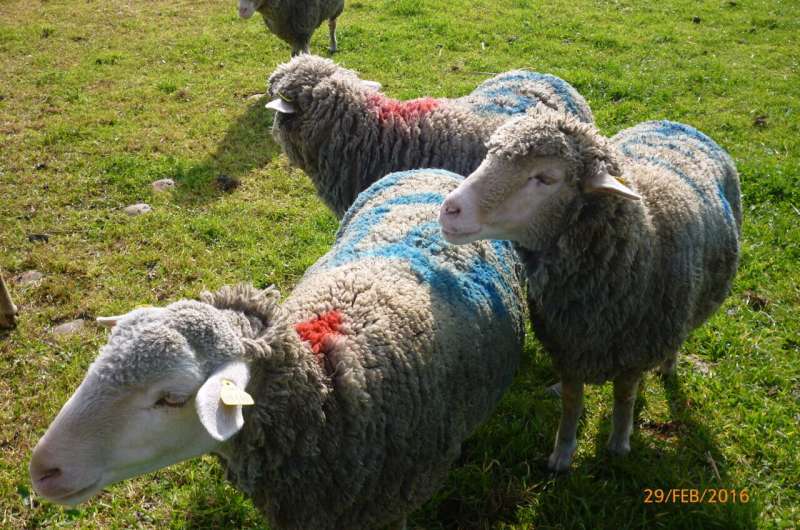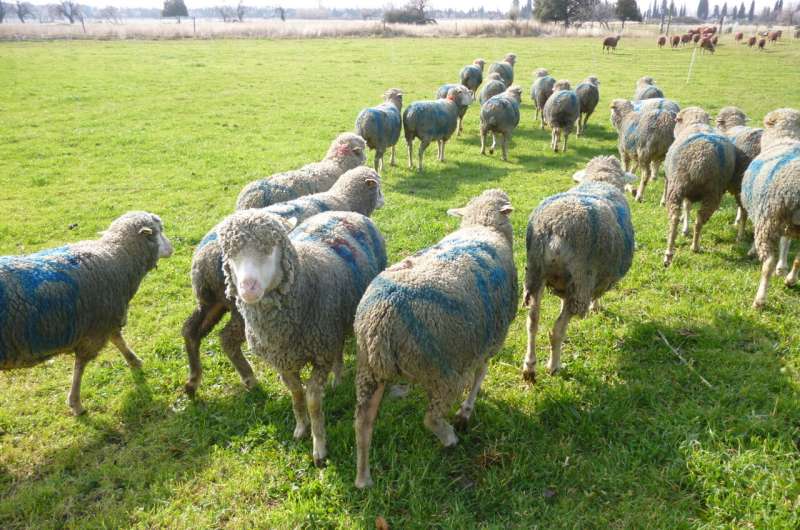
It appears that sheep flocks demonstrate spontaneous intelliegence in the same way as any bird flock and i suspect any hunting pack as well.
Again the easy answer is shared short range comms in the form of mind to mind imaging. a freind experienced exactly this mind to mind directly with an elephant.
It also explains the herting efficiency of dogs. Unless of course someone is able to starty translating dog. Seriously mind to mind comms make all this easy and even possible.
Physics study shows that sheep flocks alternate their leader and achieve collective intelligence
by Ingrid Fadelli , Phys.org
Credit: Luis Gómez-Nava, Richard Bon and Fernando Peruani.
https://phys.org/news/2022-11-physics-sheep-flocks-alternate-leader.html?
The collective motion of animals in a group is a fascinating topic of research for many scientists. Understanding these collective behaviors can sometimes inspire the development of strategies for promoting positive social change, as well as technologies that emulate nature.
Many studies describe flocking behavior as a self-organized process, with individuals in a group continuously adapting their direction and speed to ultimately achieve a "collective" motion. This perspective, however, does not consider the hierarchical structure exhibited by many animal groups and the possible benefits of having a "leader" guide the way.
Luis Gómez-Nava, Richard Bon and Fernando Peruani, three researchers at Université Côte d'Azur, Université de Toulouse, and CY Cergy Paris Université have recently used physics theory to examine the collective behavior of small flocks of sheep. Their findings, published in Nature Physics, show that by alternating between the role of leader and follower, the flock ultimately achieves some form of "collective intelligence."
"In most gregarious animal systems, collective motion is not a continuous process, but occurs in episodes: collective motion phases are interrupted, for instance, to rest or feed," Peruani told Phys.org. "Nevertheless, most collective motion studies, including experimental and theoretical ones, consider groups that remain, from the beginning till the end, on the move. Furthermore, it is often assumed that flocking behavior requires individuals to continuously negotiate on the direction of travel."
The key objective of the recent work by Peruani and his colleagues was to investigate the collective motion of an animal system in a way that explicitly considers the temporal aspect of the observed self-organized process, specifically that collective motion phases have a beginning and an end. In addition, the team wished to adopt an alternative and holistic perspective, which considers the animal group's motion as a collection of "collective phases."
"From this perspective, questions on the mechanisms of information sharing and consensus decision-making adopt a new dimension," Peruani explained.
In their experiment, Peruani and his colleagues closely studied the spontaneous behavior of small groups of sheep over varying time intervals. They analyzed the trajectories of individual flock members and computed the animals' overall spatial order and orientation, while also assessing correlations between the velocity at which individual animals moved.
"We first showed that none of the existing flocking models, or extensions of them, is consistent with our observations," Peruani said. "Then, we analyzed how information travels through the group, identifying an interaction network consistent with the data, and investigated which information is transmitted through this network."

Credit: Luis Gómez-Nava, Richard Bon and Fernando Peruani.
Interestingly, Peruani and his colleagues found that the interaction network representing the behavior of the flocks they observed was highly hierarchical. In addition, they showed that the only information propagated through this network is that related to the sheep's position within the group.
Using their findings, the researchers built a model of collective animal motion that focuses on two key cognitive processes. These processes are the selection of a leader who will lead the flock for a specific amount of time and the mechanism underlying the flock's navigation.
"Importantly, each collective motion phase possesses a temporal leader," Peruani explained, "We investigated the mathematical properties of the resulting model to identify the advantages of the unveiled collective strategy. I believe that the main contribution is the following: the animals, by using a hierarchical interaction network to move together for a while give full control of the group to the temporal leader, but there is also a rapid turnover of temporal leaders."
Essentially, the researchers' finding suggest that while moving in flocks, sheep alternate between the role of leader and follower. Leaders are thus only leading the group for a certain amount of time, before control of the group is transferred to another sheep.
"If a temporal leader has knowledge relevant to the group (e.g., the way out of a maze or the location of a food source) then, the temporal leader will be able to efficiently guide the group," Peruani said "In this way, all group members take advantage of that knowledge. It is worth noting that this only works if all individuals follow the temporal leader without questioning."
The findings gathered by Peruani and his colleagues shed some new light on the dynamics underpinning the collective motion of small sheep flocks. To investigate the extent to which these findings can be generalized, however, further experiments with bigger herds and different animals will need to be conducted.
"We wondered: if there is a temporal leader at every moment, how does the group share and process information that each individual member of the group may have? Can the group perform information pooling to improve its ability to accurately navigate to a distant place? In short, does the group exhibit collective intelligence?" Peruani said. "We proved that by regularly changing the temporal leader, the group is able to exhibit information pooling and collective intelligence."
Overall, the recent work by this team of researchers highlights the possibility that some naturally occurring collective animal strategies take advantage of both hierarchical and democratic organizational schemes. In the future, their observations could inspire new studies investigating the physics and biology underpinning these intriguing collective animal behaviors.
"We are now investigating collective motion using groups of different agents," Peruani added. "Specifically, we are comparing the spontaneous behavior of groups of lambs, young sheep, and adult sheep, to investigate whether sheep learn to follow temporal leaders and to act as one over time. We are also investigating how groups behave in complex environments such as mazes or arenas with different food patches that can trigger a conflict of interests within group members. And more generally, we are investigating how collectives distribute and process information, using several statistical mechanics tools. "
No comments:
Post a Comment